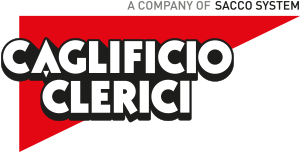Casein cheese labels: what they are, their purpose, and the information they carry
What are casein labels?
Casein labels (often also called “casein plates” or “casein plaques”) are special labels used to identify and certify cheeses. They are made from a natural, edible material derived from casein, a milk protein, and are applied directly to the cheese rind during production.
These labels feature a unique identification code or serial numbers that make it possible to trace the producer, the production date, and the type of cheese. Thanks to their durability, they remain intact even throughout the aging process.
What are they for?
Casein plates are not just an identifier; they also bring significant benefits to both producers and consumers. Here are the main ones:
Natural, safe marking
One of the key features of casein labels is that the marking—which can include logos, numbers, and alphanumeric codes—is indelible. This means it cannot be removed or falsified, offering a level of security that protects the brand and the producer from potential counterfeiting.
Traceability and transparency
Casein plates are not just a way to mark cheese; they are a genuine tool for transparency. Every wheel of Parmigiano Reggiano can be traced thanks to its identification code, which makes it possible to determine its origin, producer, and product history. This traceability system meets growing consumer demands for information about the provenance and quality of the foods they buy.
Fighting counterfeiting
Casein labels are among the most effective solutions to combat counterfeiting. Thanks to their uniqueness and the difficulty of reproducing them, they provide a guarantee of authenticity that protects both consumers and producers. In this way, consumers can be confident they are purchasing an authentic, high-quality product.
The information contained on casein labels
The casein plaque is not just a label; it’s a concentrate of essential information for both consumers and producers. Here is what you can find on each wheel:
- Designation: the name of the cheese.
- Identification code: a unique code that makes it possible to trace the producer and the individual wheel of cheese. This traceability system is essential to ensure the product’s origin and quality, providing consumers with an added layer of confidence.
- Ingredients: the label clearly lists the ingredients of the cheese, which are only three: milk, salt, and rennet. The absence of additives and preservatives underscores the product’s purity—one of the features that makes the cheese prized.
- Production date: the plaque indicates when the cheese was produced. This information is crucial for determining the product’s freshness and for monitoring the aging stages, another key factor in the cheese’s flavor and organoleptic characteristics.
- Aging: the length of the cheese’s aging is also reported, with periods that may vary depending on the type of cheese (24 months, 30 months, 36 months, etc.).
- PDO logo: finally, the plaque may feature the PDO logo, a mark of guarantee that ensures the product’s authenticity and its compliance with production standards.
In recent years, QR codes can also be printed on casein labels which, when scanned with a smartphone camera, can provide much more information to consumers about the cheese’s characteristics and the company that produced it.
Caglificio Clerici casein labels
Caglificio Clerici, a leading supplier of ingredients and products for the dairy sector, stands out for its focus on quality and transparency. The casein labels marketed by Caglificio Clerici not only include the features required by regulations, but go further by offering consumers detailed information about the cheese to which they are affixed.
Caglificio Clerici’s casein labels are a key element in the enhancement of dairy products, synonymous with transparency, quality, and sustainability. These labels not only improve the consumer experience, they also reflect the company’s commitment to excellence and responsibility in the food sector.
Conclusions
Casein plates are far more than a simple label: they are a real “passport” certifying the authenticity, quality, and origin of the cheese. The combination of traceability, safety, and transparency they provide is added value not only for producers, but also for consumers, who can purchase cheese with the assurance of a genuine, top-tier product.
